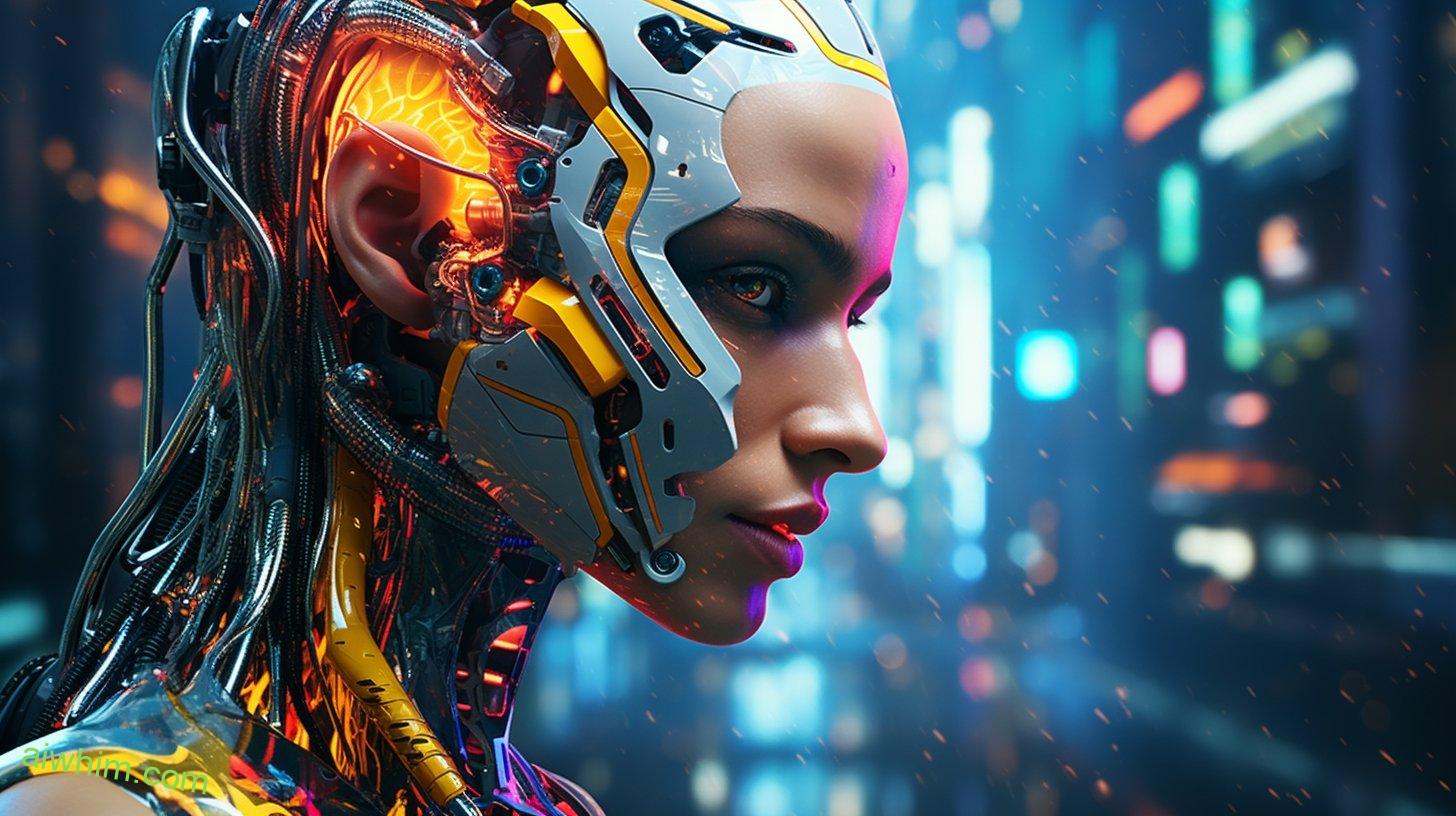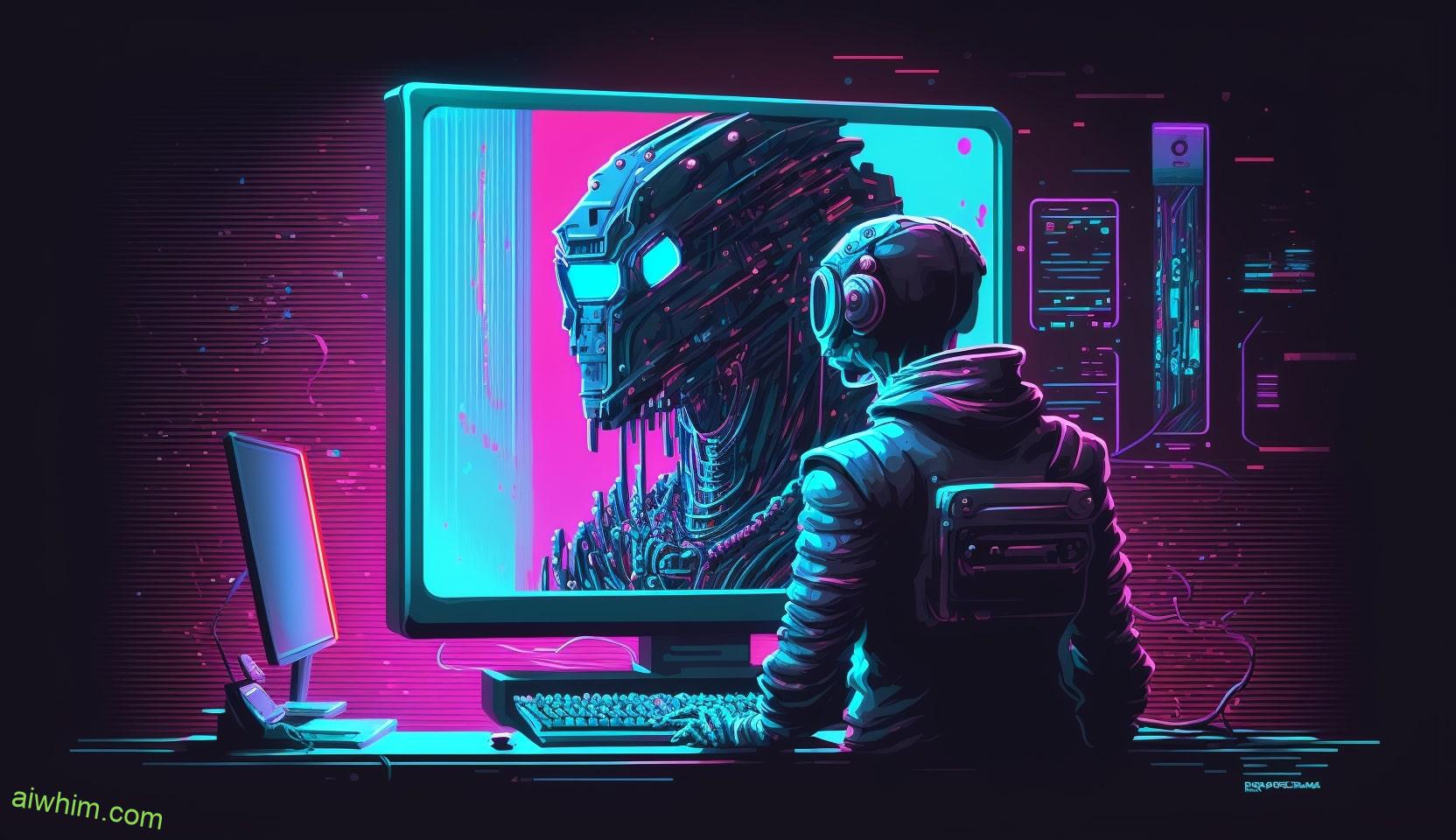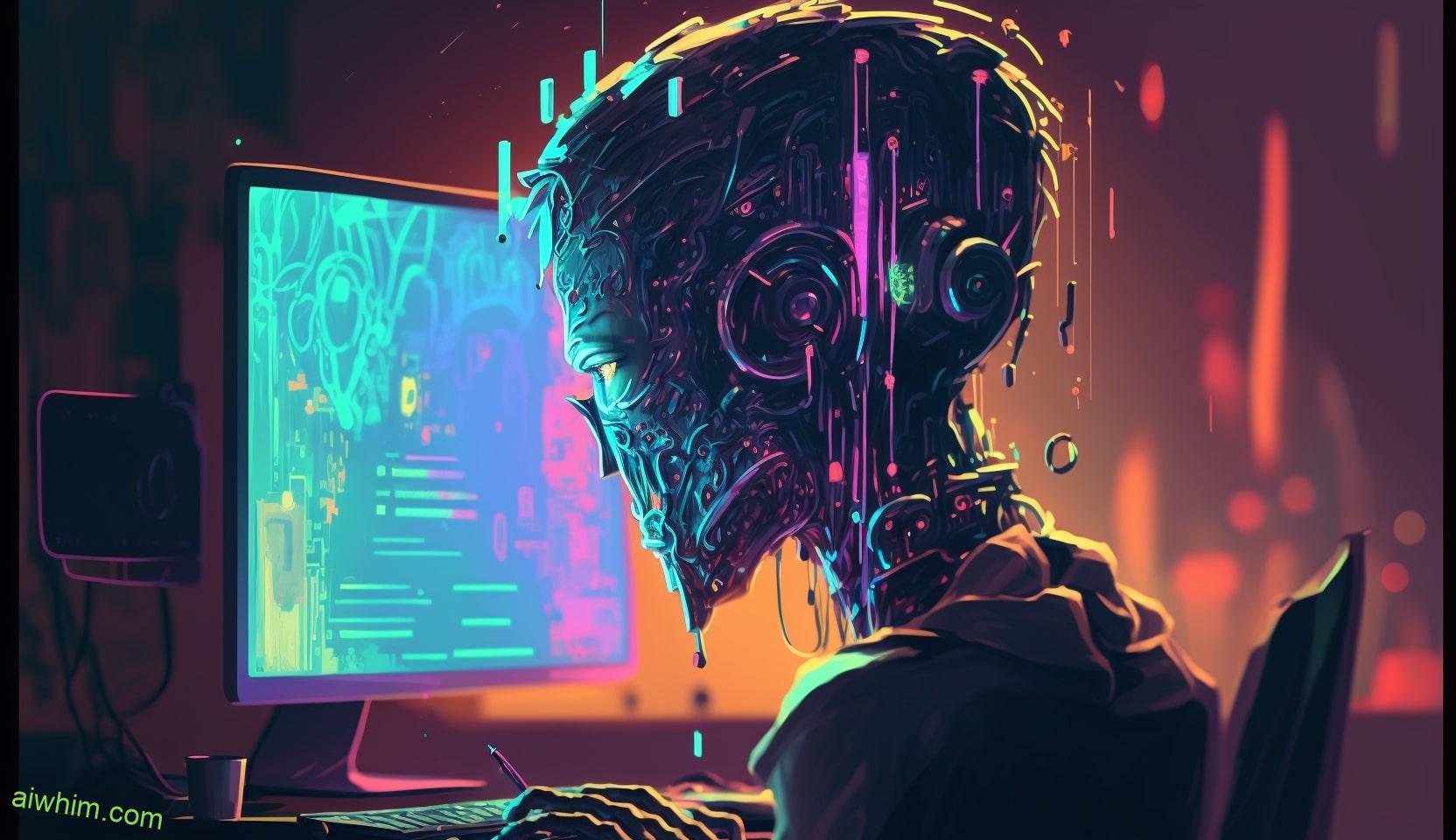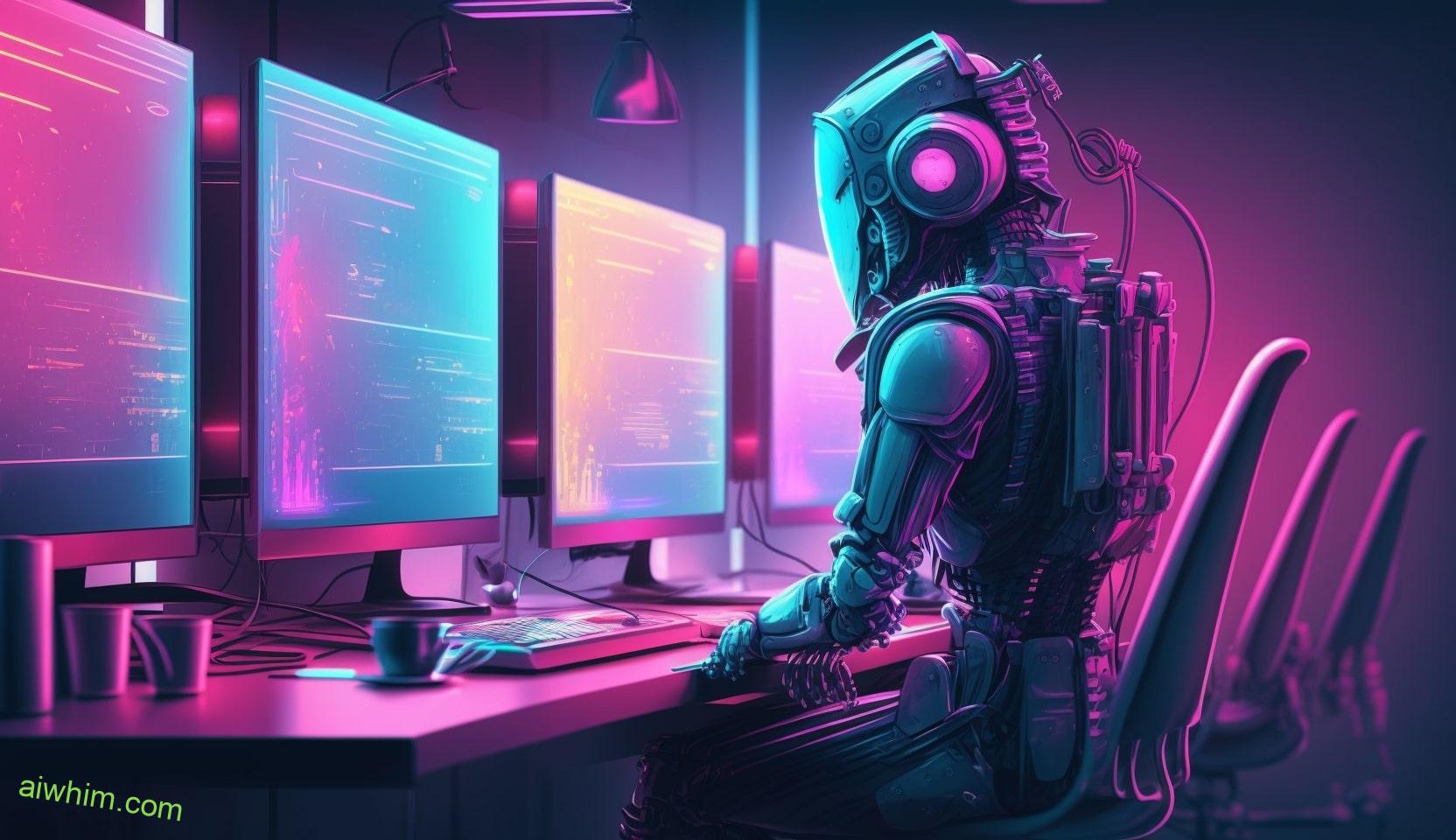Are you an Advertising Executive worried about the potential for Artificial Intelligence (AI) to replace your job? The rapid advancement of AI technology has raised the question: is there a risk that AI will eventually take over jobs traditionally done by humans, like those in advertising? You may have heard stories of automation replacing human labor in other industries. But could it happen to yours too?
This article explores this possibility and looks at what we know so far. We’ll examine how AI works and whether or not it is capable of taking on some of the more complex tasks associated with being an Advertising Executive. Finally, we’ll discuss ways to stay ahead of the curve as new technologies continue to emerge. So if you’re concerned about keeping your job safe from automation, read on!
The thought of robots becoming our co-workers can be unsettling – but today’s reality is much different than science fiction movies might lead us to believe. In fact, rather than eliminating jobs outright, AI tools are often used to supplement existing roles within organizations. By understanding how these technologies work and preparing yourself for their continued development, you can remain competitive in a changing job market without sacrificing your freedom.
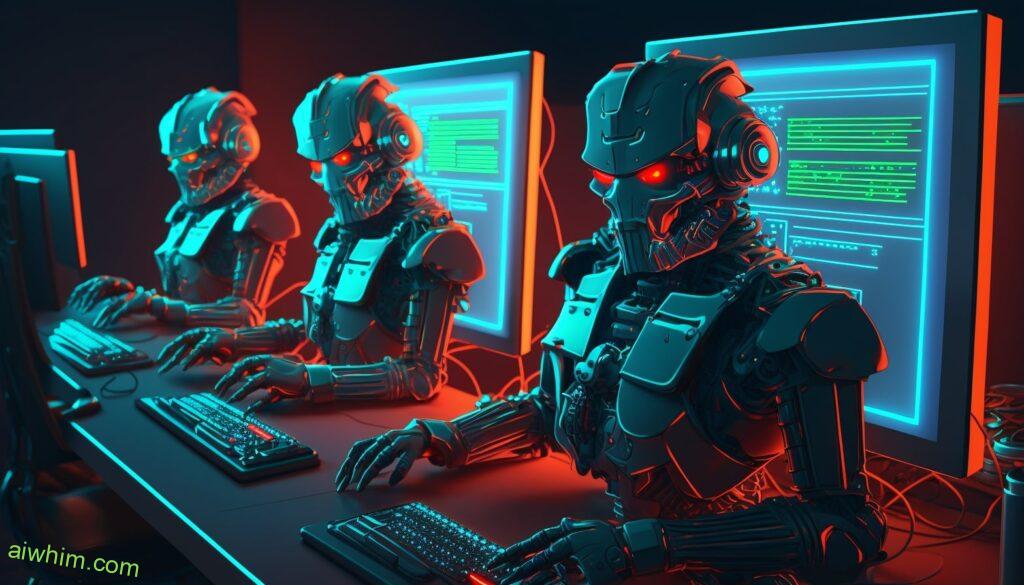
Definition Of AI
AI technology is a rapidly advancing field of computer science that encompasses various areas such as machine learning, natural language processing, robotics automation and deep learning. This broad range of technologies has enabled us to develop machines that are capable of performing tasks traditionally done by humans, thus leading to the question: will AI replace jobs currently occupied by professionals? To answer this concern it is important to understand what defines Artificial Intelligence (AI).
At its core, AI is an umbrella term for any computer system designed to mimic human behavior or thought processes. It can take many forms and include everything from basic algorithms used in everyday applications like search engines and voice recognition software up to sophisticated data-driven tools implemented in autonomous robots with advanced reasoning capabilities. The common denominator between them all is their ability to identify patterns within large amounts of data and then use those insights to make decisions or generate predictions.
In short, AI allows computers to think on their own, rather than simply following instructions given by people. By leveraging powerful computing resources and complex mathematical models, AI systems can detect subtle trends over time that would be too difficult or impossible for a person alone to come across. Therefore, while some fear that these advancements could lead to job displacement in certain fields, others believe they offer exciting opportunities due to their potential for increased efficiency and productivity.
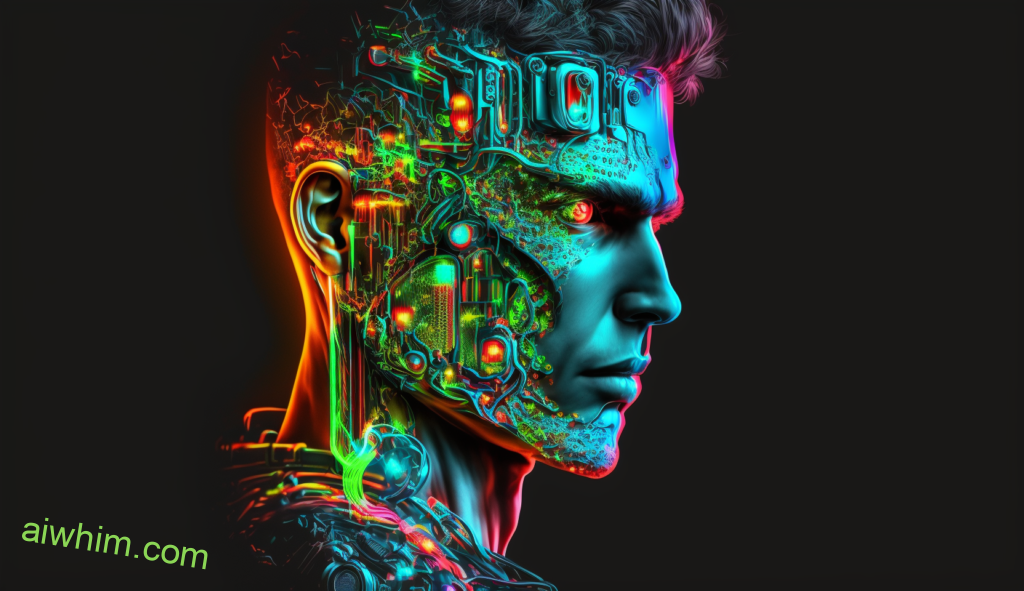
Historical Perspective Of Automation
The automation of jobs has been a part of history for centuries, and advertising is no exception. In fact, the impact of technological advancements on marketing dates back to the invention of the printing press in 1440. This innovation allowed advertisers to reach larger audiences than ever before, with greater speed and efficiency.
Fast-forward hundreds of years later to the modern era, and technology continues to revolutionize how advertising works. Automation tools such as artificial intelligence (AI) have become invaluable assets when it comes to creating targeted campaigns that deliver results. AI can analyze customer data faster than humans, allowing advertising executives to focus their efforts more efficiently while freeing up time for creativity and strategy development.
Considering this timeline of automation innovations, there’s no denying that digital technologies are transforming the advertising industry – from targeting customers more precisely to optimizing ad spend across multiple channels. However, rather than replace human labor altogether, machines will undoubtedly help streamline workflows so ad executives can continue doing what they do best: driving meaningful connections between brands and consumers through their creative ideas and expertise.

Current Use Of AI In Advertising
It’s like the Wild West out there in the world of advertising – AI is making its presence felt everywhere. From automating mundane tasks to leveraging predictive analytics, it’s revolutionizing the way businesses reach and engage their customers. In fact, AI has become so advanced that some companies are beginning to use it for more complex decisions such as media buying or deciding who will be targeted with a particular advertisement.
AI technology can also be used to analyze data from customer surveys and other sources in order to gain insights about customer behavior. For example, machine learning algorithms can be applied to this data to help identify trends, patterns, correlations and even causal relationships between variables which may not have been noticed before. This kind of insight allows marketers to make better informed decisions about how best to target their campaigns for maximum effectiveness.
The implications of these advancements are both exciting and scary at the same time; on one hand they provide an unprecedented level of accuracy and efficiency when executing marketing strategies but on the other hand, depending on how much control humans cede over decision-making processes, could result in job losses due to automation or lack of need for certain positions altogether. It remains uncertain what lies ahead but what is clear is that AI has already begun transforming the face of modern advertising.

Benefits Of AI For Businesses
The current use of AI in advertising has opened up a world of possibilities, but it also raises the question of whether machines could replace skilled professionals. While this may be true to some extent, there are still many benefits that AI provides for businesses.
One benefit is increased productivity and efficiency. Businesses can now access sophisticated data analysis tools which enable them to track customer behaviour and make decisions quickly and accurately. This helps improve their overall performance and drive more profits. Additionally, AI can automate mundane tasks such as data entry or report generation, freeing up time for executives to focus on other areas like creative innovation.
AI also offers businesses an opportunity to explore new avenues with creativity and innovation. By leveraging machine learning technologies like natural language processing (NLP) they can create highly personalized content tailored specifically to customers’ needs and interests. Furthermore, AI-powered solutions have enabled companies to develop products faster than ever before by automating testing processes and helping developers identify potential issues early on in the development cycle.
Overall, while some jobs may be replaced due to advances in technology, the benefits that AI can bring far outweigh any negative impacts it might have on employment opportunities. Companies need skilled professionals who understand how best to utilize these powerful tools – together they will help unleash business growth potentials that were previously unattainable without advanced analytics capabilities powered by artificial intelligence.

Potential Impact On Human Employment
The notion of AI automation has the potential to spark anxiety in many people. As an Advertising Executive, you may be wondering if your job is at risk of being replaced by machines or computers. Could this technology put human employment in jeopardy? This section will explore the potential impact that AI automation could have on human jobs and its implications for labor market dynamics.
AI-driven automation carries with it significant ramifications for labor markets and workforce. Job displacement due to technological advancements can drastically alter traditional ways of working, leading to a decrease in available positions and increased competition among workers who are left standing. Furthermore, because machines are becoming increasingly capable of performing complex tasks that were once carried out exclusively by humans, there is now greater concern about job security than ever before.
Ultimately, how we manage this emerging technology will determine whether it becomes a driver of economic growth or a threat to human capital and employment opportunities. It’s important to note that while automation does displace certain types of occupations, it also creates new ones as well.
It’s clear that AI automation presents both challenges and opportunities for those within the advertising industry, requiring everyone in the space to stay informed about developments within the field so that they can remain ahead of any impending change. The future remains uncertain but one thing’s for sure: Ad executives should take action now to protect themselves against potential disruptions caused by advances in artificial intelligence technology.
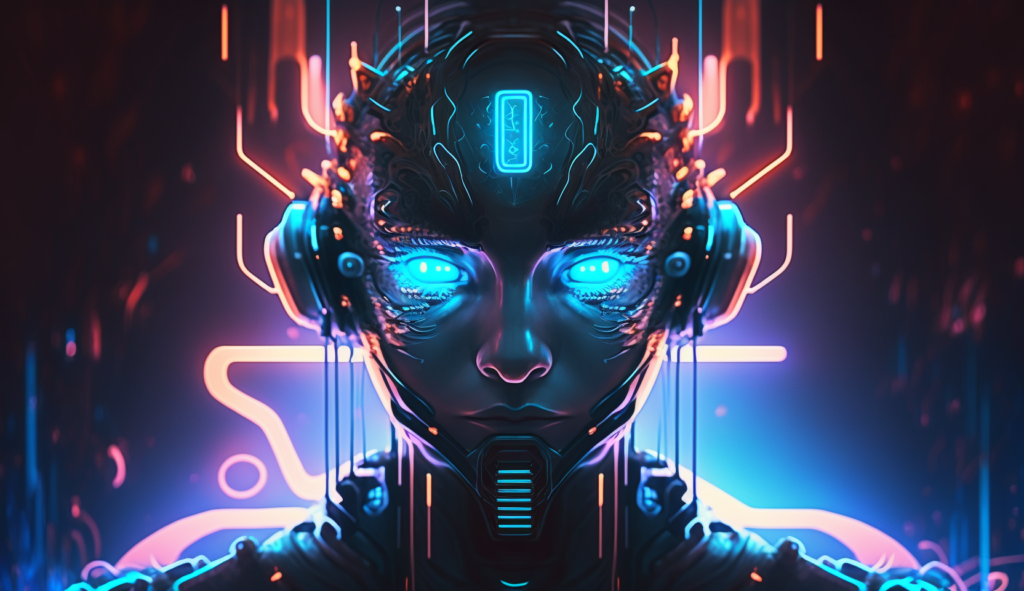
Difficulties Facing Ad Executives In The Age Of Automation
As an advertising executive, you must grapple with the challenges posed by automation and AI implementation. In many industries, these technologies are being used to replace human labor, causing job displacement of those who lack the skillset to transition into new roles. As a result, ad execs must work diligently to stay ahead of the curve in order to remain competitive and relevant within their field.
One way for ad executives to safeguard against potential job loss is to continually develop their capabilities so that they can keep up with changing trends in technology. This may include taking courses or attending seminars on topics such as machine learning and artificial intelligence (AI). Additionally, staying informed about developments in automation and AI can help ensure that your knowledge base remains current and valuable.
Ad executives must also strive for balance between manual tasks and automated processes when it comes to structuring campaigns. It’s important to remember that no matter how sophisticated algorithms become, there will always be a need for creative input from humans. Ad executives should focus on utilizing both traditional methods and emerging tools in order to achieve maximum efficiency while still allowing room for creativity in their campaigns.
In short, it is essential for ad execs today to recognize the impact of automation on their profession while at the same time managing its risks through continued learning and development opportunities. By doing so, they can demonstrate their value beyond the possibility of human replacement – ensuring longevity within this rapidly evolving industry.
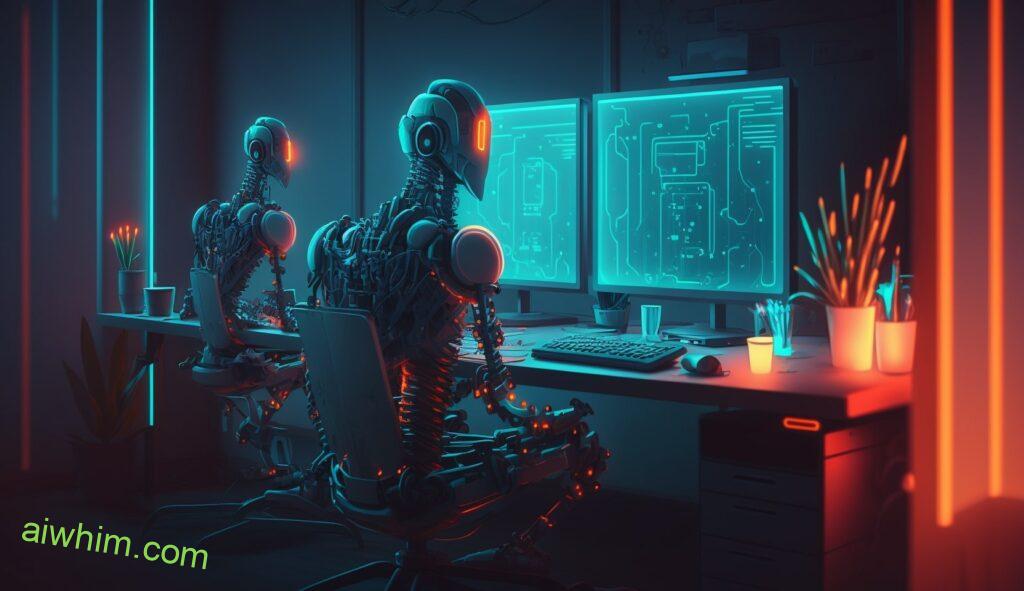
Ethical Implications Of Replacing Human Jobs With Machines
The discussion of difficulties facing advertising executives in the age of automation brings up a pertinent question: is there a risk that AI will replace human jobs? This article explores the ethical implications of replacing human employment with machines and how this could affect the future workforce.
Firstly, many people are concerned about potential job losses due to AI-driven automation. While automation can lead to more efficient processes and cost savings for businesses, it also has serious consequences for humans who may find themselves out of work as their skills become obsolete or no longer necessary. As such, questions arise over whether it is ethically responsible to accept machine replacements when so many individuals could be adversely affected by losing their jobs.
Secondly, debates around AI ethics have stirred much controversy among experts in both industry and academia. There are arguments on both sides regarding what constitutes an appropriate level of ‘intelligence’ when creating machine jobs, as well as whether these should be held accountable for any decisions made without human input. Additionally, some feel that certain types of machine roles should not exist at all if they do not benefit humanity in some way – such as those designed purely for economic gains above other concerns.
Finally, while technology continues to advance rapidly, it is important to consider its impact on our lives from an ethical perspective. Companies must take responsibility for understanding the implications of incorporating machine capabilities into their operations, including how this might affect workers employed within a given organization or sector. The future depends upon us making informed choices now which respect the rights and safety of everyone involved in this new era of automation; only then can we ensure a positive outcome where all parties benefit from advances in artificial intelligence technologies.

Financial Implications For Companies And Employees
The potential of AI to replace the jobs of advertising executives is a real concern that raises many financial implications for both companies and employees. Automation costs can be an enormous burden on businesses, as they must invest in new technologies and possibly restructure their entire marketing departments. For employees, job displacement due to automation means they could require retraining or even need to search for completely different occupations.
Businesses should consider the long-term ramifications of using artificial intelligence technology over human labor. Companies may save money with automated processes, but this could come at the expense of employee satisfaction and productivity. Employees also face uncertainty during times of transition, as some positions are likely to become obsolete while others remain intact. This leaves individuals feeling uncertain about their employment prospects for years to come.
Employees who find themselves out of work due to automation will have difficulty finding another role within the same industry given the prevalence of advanced technologies like AI. As such, it’s important for them to develop skills relevant across industries so they can stay competitive in a rapidly changing job market. Companies too must take responsibility by providing resources like training programs and career counseling services to help those affected by job displacement adjust accordingly.

Effect On Advertising Strategies
The rise of AI in advertising is a double-edged sword. On one hand, it’s allowing marketers to automate their strategies and optimize their budgets effectively; however, this automation can also have negative effects on the industry. While machine learning and artificial intelligence may be able to take over some marketing tasks and improve efficiency, they can’t replace the creativity and innovation that come with human involvement.
AI-driven advertising has already drastically changed how businesses go about executing their campaigns. Automation allows for faster execution times, improved accuracy, reduced costs, and more targeted messaging capabilities. However, when left unchecked or not properly monitored by humans, this type of automated strategy could lead to poor outcomes such as ineffective ads or wasted budget funds. Additionally, algorithmically generated content lacks the emotional connection that comes from true storytelling—a key element of any successful ad campaign.
Overall, while advances in technology are making it easier for companies to target audiences with greater precision than ever before, these same tools should be balanced with traditional methods like creative brainstorming sessions between agencies and clients in order to ensure maximum impact. AI might make the lives of ad executives a little easier but at the end of the day, it still requires input from people who understand both the technical side of things as well as what resonates most with consumers in order for an effective ad campaign to truly succeed.

Regulatory Role Of Government And Trade Unions
The potential of Artificial Intelligence (AI) to replace certain jobs has raised questions about the possibility of job displacement. Governments and trade unions are playing an increasingly important role in protecting workers from automation-related job losses. Government regulations that protect worker rights, such as those concerning minimum wage and maximum hours worked, provide a foundation for workforce protection. Trade unions have played a critical role in developing regulations and policies to ensure fair recruitment practices and workplace safety standards, as well as providing representation for their members when disputes arise between employers and employees.
In addition to these traditional approaches, governments can also play a more proactive role in addressing AI-induced disruption by introducing specific laws or amendments to existing legislation which focus on job security. For example, one possible approach is the introduction of ‘automation regulations’ which would require companies to inform workers if they plan on replacing them with automated systems. This could give employees time to find alternative employment while gaining experience through retraining programs provided by government or private institutions.
Trade unions can also help promote job security by engaging with businesses that use technology such as AI, negotiating agreements that protect the interests of their members without hampering innovation. Unions can provide guidance on how best to transition into new roles, helping bridge any skills gaps that may exist due to technological advancement. Ultimately, public policy initiatives must be tailored specifically for each industry in order to maximize job retention and minimize job loss caused by automation technologies like AI.
By leveraging Government regulations combined with union engagement strategies it’s possible to create safeguards against displacement caused by automation technologies while promoting economic growth at the same time. With this balance in mind, both employee protections and business success could be ensured throughout rapid changes brought forth by advancing technology.
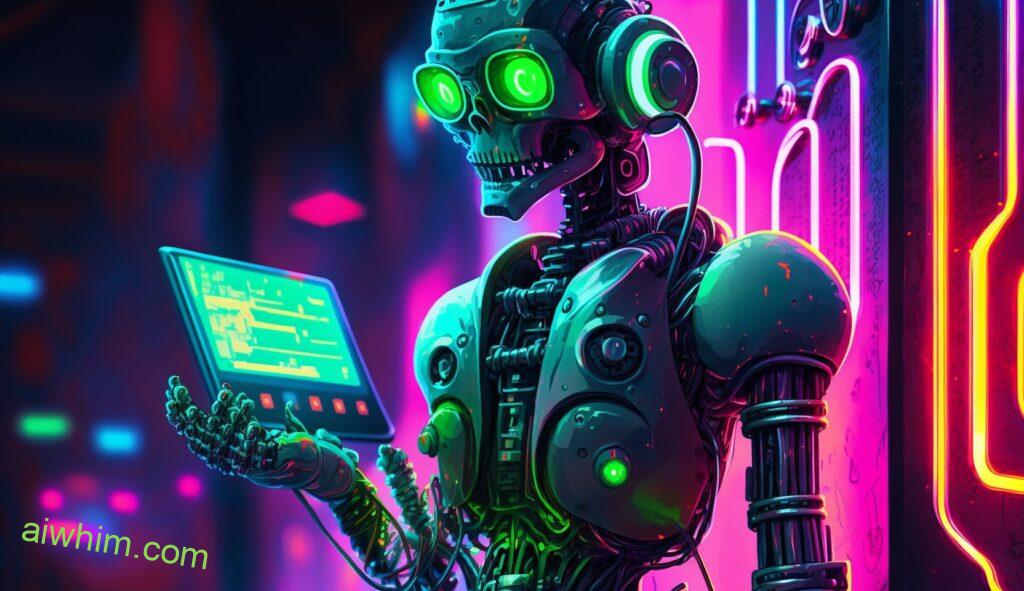
Need For Skilled Professionals Working Alongside Automation
It looks like the robots are coming for us! No, not to take our jobs–but to share them. With automation increasingly used in industries around the world, we’re seeing a growing need for skilled professionals who can work alongside machines and use their creativity and innovation to drive success.
While technology has been able to automate many of the mundane tasks that once took up large chunks of time, it still isn’t capable of replicating some of the more complex or creative roles within an organization. As such, there is a great opportunity for those with specialized knowledge and skills to capitalize on this shift towards automation by offering their services as part-time consultants or full-time employees. It could be anything from digital marketing experts providing SEO advice to graphic designers helping create attractive visuals for websites – there is much potential available even when traditional roles become less pertinent due to advances in AI capabilities.
The key here is that these skilled professionals should focus on developing long tail rather than short term goals; this will ensure they have longevity in their chosen field despite any changes automation may bring about over time. This type of approach also allows individuals to leverage their unique talents and experiences in order to carve out a niche where they can thrive while staying ahead of the curve no matter what new technologies arrive down the line.
In other words, while businesses are becoming more automated, there still remains plenty of room for human interaction –even if it comes in different ways than before. By embracing this change instead of fighting it, workers can remain relevant by tapping into their own skillsets and learning how best to apply them given today’s ever-evolving landscape.

Leveraging AI To Improve Productivity And Efficiency
AI has the potential to drastically improve productivity and efficiency in the advertising industry. Automation technologies such as machine learning algorithms can be used to automate mundane tasks, which can free up time for creative ideas that can increase profits. Leveraging AI also enables businesses to measure their performance more accurately, enabling them to make better decisions about where resources should be allocated.
The use of AI-driven solutions allows companies to streamline processes, reduce functional costs and stay ahead of competitors. With improved data analysis capabilities, businesses can gain deeper insights into customer behavior and optimize strategies accordingly. This helps create personalized experiences for customers while increasing conversions and sales.
Using AI in the workplace has a variety of benefits including cost savings, increased accuracy, faster decision making and heightened security measures. By leveraging AI’s intelligent automation capabilities, businesses are able to reduce tedious manual labor while improving product quality. In addition, using AI technology helps organizations remain competitive by providing real-time business intelligence that leads to enhanced efficiency and improved productivity across all departments of an organization.
With its powerful advantages over traditional methods, it’s clear why many businesses are investing heavily in AI technology — it provides a platform for greater agility within the marketing and advertising industries without compromising on job security or creativity. The impact of this will be felt far beyond advertising executives; with advancing technology comes new opportunities for growth and success for everyone involved in digital transformation efforts.

New Opportunities For Creativity And Innovation
The potential of AI to revolutionize productivity and efficiency is undeniable. But what might be even more exciting are the new opportunities for creativity and innovation that it can bring about. As an advertising executive, you have a unique opportunity to leverage this technology in order to create innovative strategies, solutions, designs and applications for brands.
Creative-innovations like predictive analytics, programmatic ad buying and artificial intelligence algorithms can help you better understand consumer behavior, optimize marketing campaigns and uncover valuable insights on customer preferences. With this information at your disposal, you can craft creative solutions that target customers with greater accuracy than ever before. Additionally, these same tools offer up new ways to segment audiences, increase engagement rates and build trust between brands and consumers alike.
Innovative-strategies such as data visualization techniques or interactive content formats could also help you capture attention faster while delivering messages in more memorable ways. Creative-applications like virtual reality experiences or augmented video advertisements could allow companies to stand out from their competitors while providing users with a truly immersive experience they will never forget. And finally, innovative-designs such as conversational interfaces or machine learning algorithms could enable marketers to deliver personalized recommendations tailored specifically for each individual user’s tastes and needs.
If you are an advertising executive today, there has never been a more exciting time to explore how AI can open up possibilities for unprecedented levels of creativity and innovation within your industry. Through its ability to provide us with actionable insights derived from vast amounts of data points combined with its capacity for automation – you now have the power of choice when it comes to making strategic decisions related to marketing efforts both online and offline. By taking advantage of all the available tools at your fingertips – including those powered by AI – you can unlock powerful new pathways towards success that were unimaginable just a few short years ago.
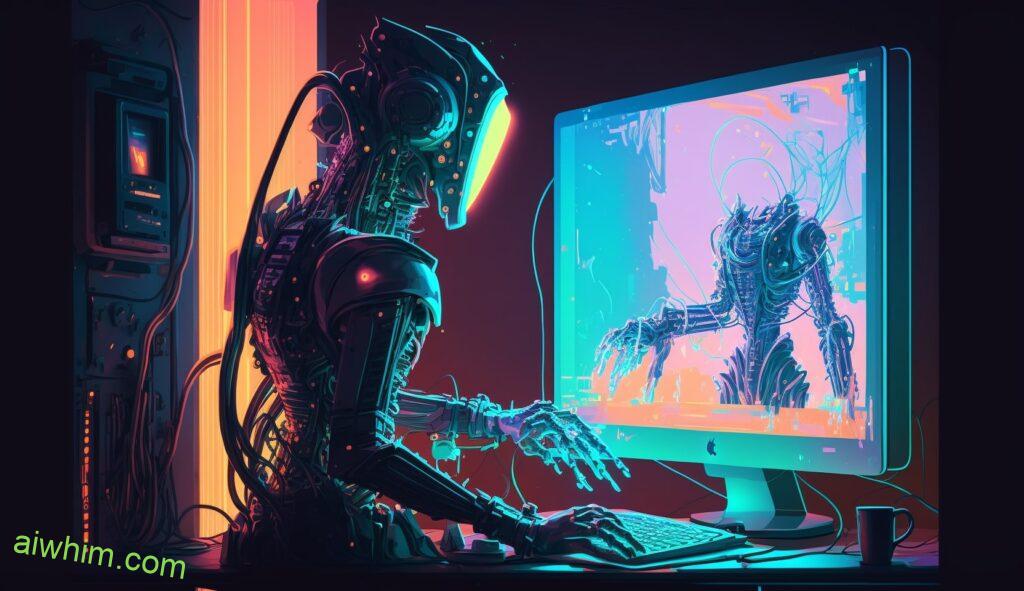
Preparing For A Future With Artificial Intelligence
The advent of artificial intelligence and automation has made many people wonder if their job is at risk of being replaced by AI. While it’s true that certain roles may be automated, there are still plenty of career opportunities available to those who know how to use AI in the right way.
To prepare for a future with AI, it’s important to develop skills that can’t easily be replaced by machines. This means honing communication abilities, creative problem-solving techniques, and interpersonal skills like empathy and collaboration. It also involves staying up-to-date on emerging technologies so you can anticipate what kind of role your industry will need in the years ahead.
For advertising executives specifically, this could mean proactively learning about the latest marketing trends or studying customer behaviour insights from data analysis tools. By doing these things before they become necessary for success in your field, you’ll be better equipped to capitalize on new employment opportunities while ensuring that any potential job replacement due to advancing technology doesn’t impede your progress as an executive.
No one knows exactly what the future holds when it comes to AI and automation – but no matter what happens, equipping yourself with knowledge and understanding now will give you greater control over your professional destiny going forward.
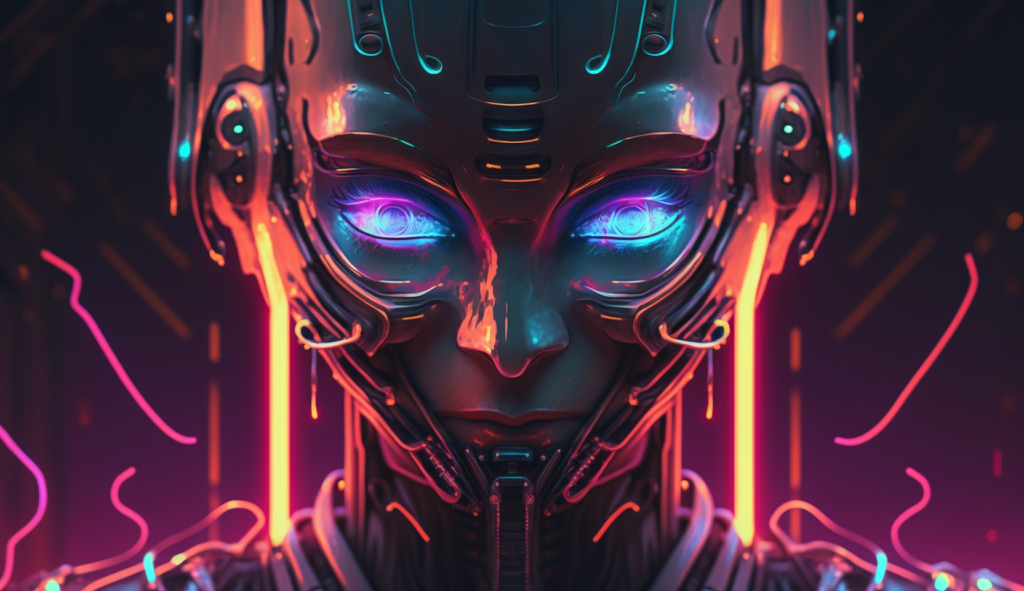
In Summary
In conclusion, it appears that the risk of AI replacing jobs in advertising is a real one. While the human touch will always be needed for creative aspects of work such as marketing strategy and content production, automation can improve productivity and efficiency to an unprecedented level. As such, advertising executives must prepare themselves for this new reality or face becoming irrelevant.
It’s ironic that just when technology has made our lives easier than ever before, it could also take away some job opportunities from us. But on the other hand, AI offers numerous possibilities for creativity and innovation that weren’t possible with manual labour alone. We should embrace these changes instead of being afraid of them – after all, progress often comes at a cost!
Ultimately, only time will tell what the future holds for those who work in advertising executive roles. It may be wise to focus on developing skills related to artificial intelligence so you’re prepared no matter what happens next. With any luck, humans won’t have to worry about robots stealing their jobs anytime soon!
Author: Ole Paulson
Author Bio: I’m Ole and on this website, I share everything there is to know about Artificial Intelligence, and useful tips for using AI to our advantage. I have a background in data science and research and have been following the AI-space for years. You can read more about me in the “About” page.



